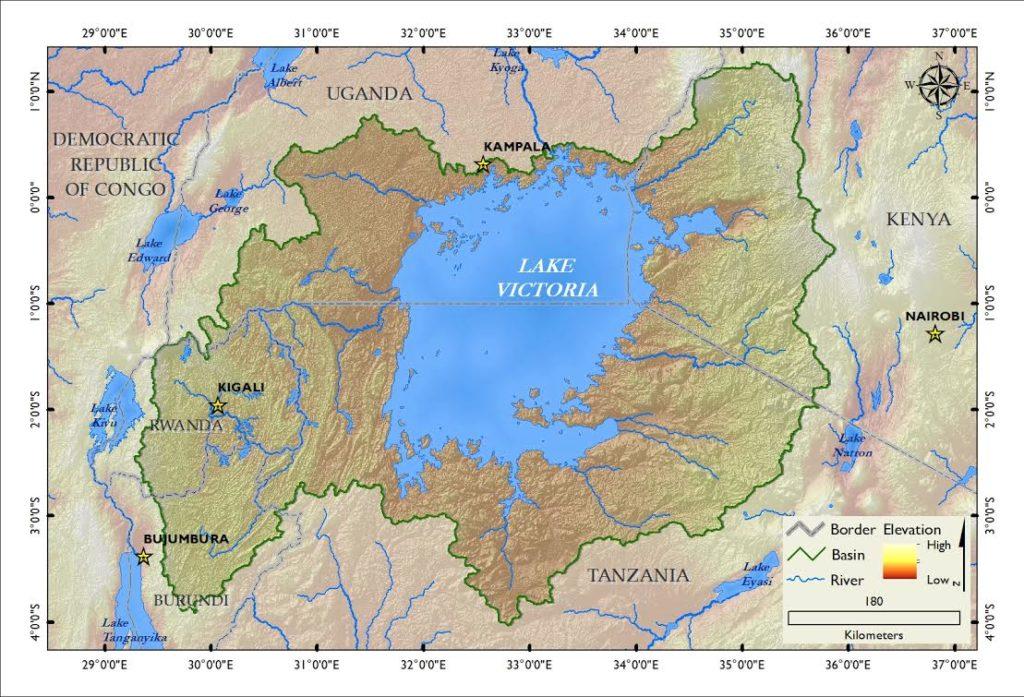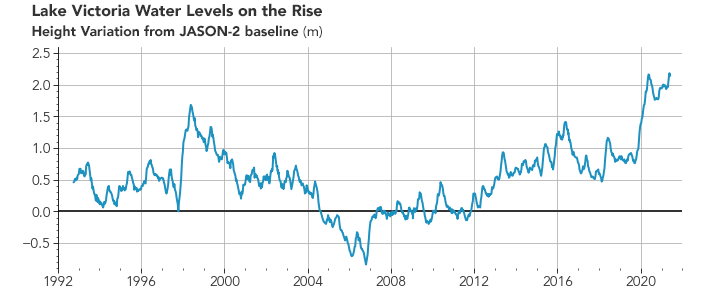Lake Victoria and Environmental Change, an Overview
After briefly mentioning Lake Victoria in my previous blog post, I thought it pertinent to explore the future impacts on it from changing environments, especially considering its pivotal role in the lives of millions.

Lake Victoria map
Anthropic Importance
Alongside the 40 million inhabitants of its catchment, Lake Victoria is also the source of the White Nile, and therefore supports the 340 million dependent on the Nile Basin. The vast amount of water it holds means that global climate is also strongly dependent on its stability, having significant impacts on monsoon and humidity conditions.
Changing Inputs

Lake Victoria water levels
Rainfall deficits in East Africa have been continuous in recent years over the March to May rainy season, which is problematic considering 87% of Lake Victoria’s input is fed by precipitation. Historic lows in lake level were seen in 2005 and the years leading up to it. However, lake level, flood intensity and frequency has also been increasing, with 2021 seeing the highest lake levels in decades, following severe flooding just one year before it. The increasing amplitude of hydrological events follows expected extreme trends of climate change, exacerbated by Lake Victoria’s high sensitivity and short temporal buffer to precipitation. This creates high climate vulnerability for the region, significantly threatening the many reliant on its variety of ecosystem services, and requiring extensive adaptation measures to ensure safety.
Ecosystem Service Impacts

Owen Falls Hydroelectric dam, Uganda
- Fishing and agriculture – A combination of climate change, deforestation, eutrophication, and overfishing have caused declining catches, species extinction and lowering income for riparian communities.
- Municipal water supply – increased input variability requires greater storage capacity than currently exists.
- Hydroelectric power – very vulnerable to rainfall fluctuations, drought or flood could be (and have been) devastating for energy availability.
There will also be devastating impacts on transport, trade, tourism, biodiversity, and culture, which I have not been able to explore here.
Management
The World Bank Lake Victoria management project has focused on taking a wide approach to the many environmental issues faced by the basin, claiming to focus on empowering locals, while the UN environmental program claims to have implemented 1500 small scale projects. These multinational top-down methods are particularly present in the region, perhaps as a result of the transboundary nature of Lake Victoria, or the region’s extensive colonial history.
The vulnerability that East Africa has to climatic stress from environmental change, and the extreme measures needed to protect the people from it, is reminiscent of a key topic as we are going into COP27: climate justice and the need for adaptation funds from developed countries.

UK PM and Kenyan President after agreeing to UK funding for climate-resilient agriculture hub built near Lake Victoria, among other projects.
Your post demonstrate a sound grasp of water and environmental issuse in Africa, and engement with relevant literaures. You have addressed key issues of measuring water scarcity and accurate prediction of hydrological cycle, which are fundamental to the management of water and environment. However, key terms and concepts like El Niño, ENSO and IOD cycles could use some introduction, especially for non-experts. Also, the use of literature and referencing is great but the format for the blog post was not fully adopted. The case study of Lake Victoria is useful, and hopefully the specific impact you highlighted can be explored in relation to specific country/basin in subsequent post.
ReplyDelete